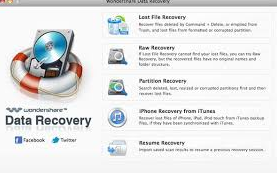Many people like to attempt a data recovery after format by themselves. These programs are simple to use and the results can be quite good. However you have to be careful not to cause further data loss during the process. In this post I’ll show you how to increase your chances of finding all documents.
Hard disk drives are often formatted as a method of clearing down the system before reinstalling the operating system or simply making your computer startup faster with newer files. This is great if you back up the data first. If not then you have to resort to data recovery tools.
Most data recovery applications can be run in a standard way. You install and start up application, pick the formatted drive for analysis and then copy the documents it locates onto a secondary partition.
The first way you could cause more data loss is by installing the program onto the formatted disk itself. This overwrites the original data clusters with your new installation files. Likewise, when you clone any of the data from the found files list you should make sure to use the second partition or external HDD instead of formatted drive to avoid overwriting lost data.
The formatting tool you use also has a major effect on how many documents will be located. If the application has any sort of commercial data protection/data cleaning utilities then they will attempt to clear all data clusters from the drive. This is perfect if you’re selling on your PC but does make data recovery after format impossible.
Data Recovery After Format
Lastly, the longer you leave it before attempting a data recovery after format the less files you will find. The simple fact is that any use of the system for running applications, creating temp files or storing new documents on the hard disk that was formatted will result in your old documents being overwritten.
Hard disk drives are often formatted as a method of clearing down the system before reinstalling the operating system or simply making your computer startup faster with newer files. This is great if you back up the data first. If not then you have to resort to data recovery tools.
Most data recovery applications can be run in a standard way. You install and start up application, pick the formatted drive for analysis and then copy the documents it locates onto a secondary partition.
The first way you could cause more data loss is by installing the program onto the formatted disk itself. This overwrites the original data clusters with your new installation files. Likewise, when you clone any of the data from the found files list you should make sure to use the second partition or external HDD instead of formatted drive to avoid overwriting lost data.
The formatting tool you use also has a major effect on how many documents will be located. If the application has any sort of commercial data protection/data cleaning utilities then they will attempt to clear all data clusters from the drive. This is perfect if you’re selling on your PC but does make data recovery after format impossible.
Data Recovery After Format
Lastly, the longer you leave it before attempting a data recovery after format the less files you will find. The simple fact is that any use of the system for running applications, creating temp files or storing new documents on the hard disk that was formatted will result in your old documents being overwritten.

No comments:
Post a Comment